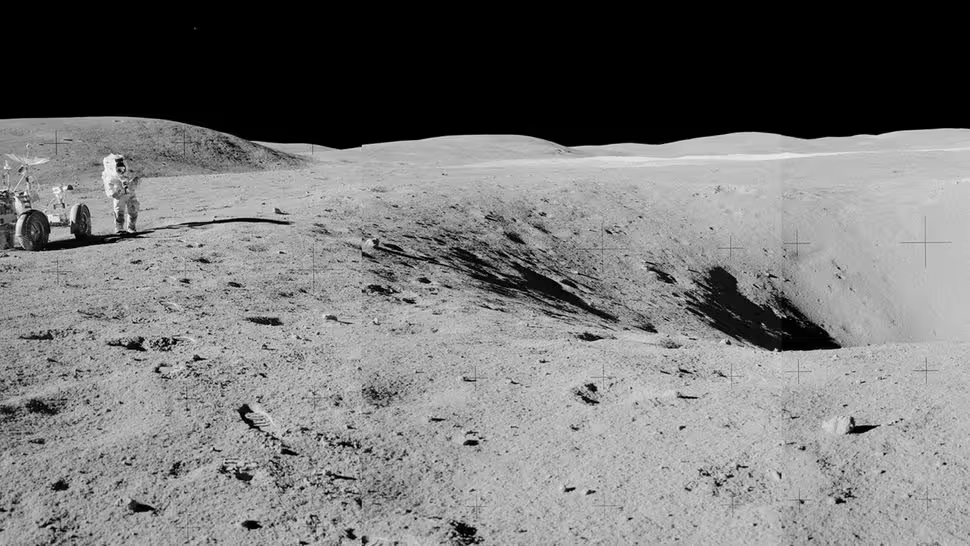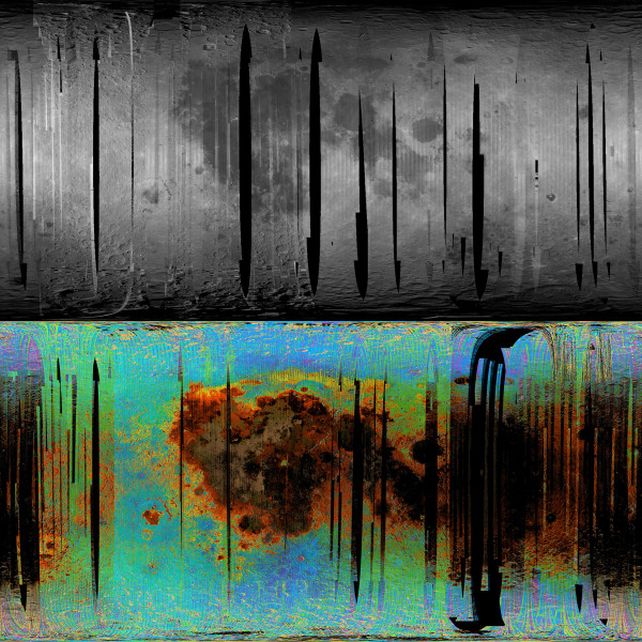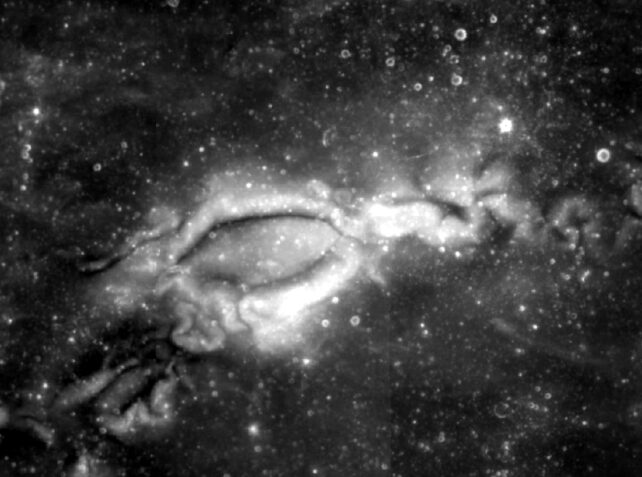Scientists found traces of water all over the Moon’s surface
- September 22, 2024
- 0
Water and hydroxyl, another molecule made up of hydrogen and oxygen, can be found in many places across all lunar latitudes and locations, even where the Sun shines
Water and hydroxyl, another molecule made up of hydrogen and oxygen, can be found in many places across all lunar latitudes and locations, even where the Sun shines

Water and hydroxyl, another molecule made up of hydrogen and oxygen, can be found in many places across all lunar latitudes and locations, even where the Sun shines brightest, according to a new analysis of mineralogical maps. It’s a discovery with many implications. It could help us understand the Moon’s geological past and present processes, and inform future crewed missions to Earth’s moon.
“Future astronauts could use these water-rich areas to find water even near the equator. Previously, it was thought that water could only be found in large quantities in the polar regions, especially in the deep shadowed craters at the poles,” says planetary scientist Roger Clark of the Planetary Science Institute.
“Knowing where water is found not only helps us understand the geological history of the moon, but also where astronauts might find water in the future.”
The moon appears to be quite dry and devoid of moisture, and in a sense it is. There is no liquid water on the surface; no lakes, no puddles, no rivers. But increasingly, research is showing that there is a lot of water hidden within the moon.
Previous studies of where all the water might be hiding have shown that large amounts of water can be found deep inside lunar craters, especially at high latitudes. These deep pockets are never exposed to the direct light and heat of the Sun, meaning they could contain ice deposits many metres thick.
But other recent studies have suggested that water may be present in other parts of the moon. And now, Clark and his colleagues’ work supports that conclusion. Water and hydroxyl, which are made up of one oxygen atom and one hydrogen atom, appear to be quite abundant on the Moon, associated with minerals that make up the rocks and dirt on its surface.

To collect spectroscopic images of the moon, the researchers used data from the Lunar Mineralogy Mapper (M3) instrument on the Chandrayaan-1 spacecraft, which orbited the moon in 2008 and 2009. This data recorded the infrared light reflected by the moon, looking for colors in the spectrum that correspond to water and hydroxyl.
The researchers found that water and hydroxyl can be found at all latitudes of the moon, although the molecules appear to be less common in lunar mares. However, water-rich rocks resulting from impacts can be found wherever such impacts occur.
Water doesn’t last forever. Researchers found that water on the lunar surface is cratered and then gradually destroyed by solar wind radiation over millions of years. However, this process separates it from hydroxyl. Hydroxyl is also produced by the solar wind, which deposits solar hydrogen on the lunar surface and can bond with oxygen to form a molecule.
“When we put all the evidence together, we see a lunar surface with complex geology, including significant groundwater and a hydroxyl layer on the surface,” Clark says. “Both cratering and volcanic activity can bring water-rich materials to the surface, and both are observed in the lunar data.”

The researchers also found that the water signature of pyroxene, a type of igneous rock, changes depending on the angle at which sunlight hits it. This raises a mystery on the moon: Scientists had observed this change in signature, but they didn’t know what it meant. It seemed to suggest that water was moving on the moon. It still could be, but not as much as the pyroxene signature suggests.
Finally, the team’s maps tell us a little more about another strange mystery of the Moon: lunar vortices. These are strange swirling patterns on the moon’s surface, and scientists don’t know what creates them, although magnetism may play a role. Clark and his team discovered that the vortices are very poor in water.
We don’t know what this means in terms of the mechanism of formation, but this signature is also found in parts of the lunar surface that don’t have vortices. The researchers believe these parts could be ancient vortices that have collapsed, leaving only a telltale trace of water to show they were once there. And it could help us understand what vortices really are.
In the meantime, the discovery points to a possible water source for lunar explorers. Future astronauts may find a way to extract water from rock by processing hydroxyl-rich minerals. The study was published on: Planetary Science Journal.
Source: Port Altele
As an experienced journalist and author, Mary has been reporting on the latest news and trends for over 5 years. With a passion for uncovering the stories behind the headlines, Mary has earned a reputation as a trusted voice in the world of journalism. Her writing style is insightful, engaging and thought-provoking, as she takes a deep dive into the most pressing issues of our time.